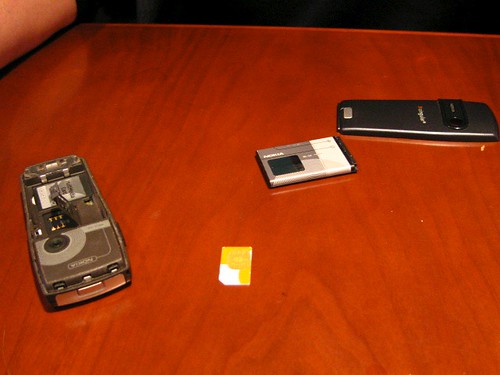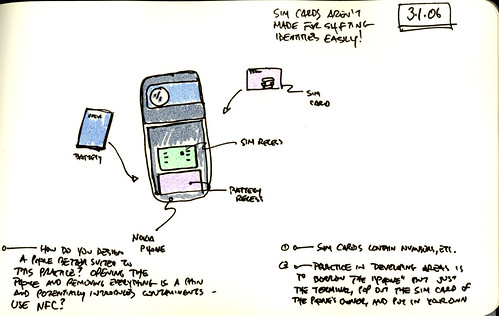
Francois is just freshly back from a trip to India to kick it with that sub-continents introduction of the Aspen Institute — I guess they’re franchising or something.
He recounted (and performed, as evidenced in the photo above!) a parenthetical story that just won’t stop knocking around in my head. In areas where owning a cell phone is not routine — for economic reasons, predominantly — it is not uncommon for a stranger to ask another stranger to borrow their handset to make a call. This happened to Francois on a trip somewhere and he, being a nice guy, agreed and handed over his phone. Only he thought this stranger was going to just go ahead and make a call. Instead the stranger dismantled Francois’ phone — removed the back, spilled the battery out and popped out the SIM card and then popped his own SIM card in there, reassembled the phone and made a bunch of calls in rapid succession, hanging up on each one after the first ring or two.
Two things are going on here.
First, this whole practice of doing a kind of semaphore call to get someone to call you back. That’s interesting — I’m not sure precisely what’s going on here. Maybe the code is to get the (mobile) person to call you back on a predetermined fixed line. Otherwise, it seems a burden to the person who loaned the phone out — what? they’re going to wait while you receive a bunch of calls and chit chat?
Second, while we know well that SIM cards are like personal data bases — names, symbols, numbers, etc — this practice in which the dynamic of SIM card behaving like selfish gene (find me a phone..find me a phone..) is really neat. Not only the idea of carrying around a SIM card so you can make calls without having to own a phone, but it is also neat from the perspective of an interesting design challenge. How do you design a phone that accommodates this kind of behavior? And, would the mobile phone ecosystem support such a usage idiom? I mean, Nokia and Motorola want to sell phones and carriers want to sell minutes. If Nokia and Motorola design a phone that makes it possible for more people to easily swap in a SIM card without the risk of damaging the device (by continually stressing plastic bits and getting dirt and dust inside), they may in fact sell less of them. Maybe.
Let’s say they knuckle under and design a phone for a market that has this specific need. What would it look like? Would it have a SIM in it that has a reserve of space to handle it being temporarily written with additional information so that the person borrowing the phone uses some sort of near-field device to temporarily write their SIM information? Is it a mechanical fix — a sliding drawer or an adapter that is more exoskeletal?
Why do I blog this? I just thought this little story was too cool not to recount. I’m sure more travelled folks than I have plenty of such stories. But thinking about how to design for these kinds of usage contexts is fun, anyway!
